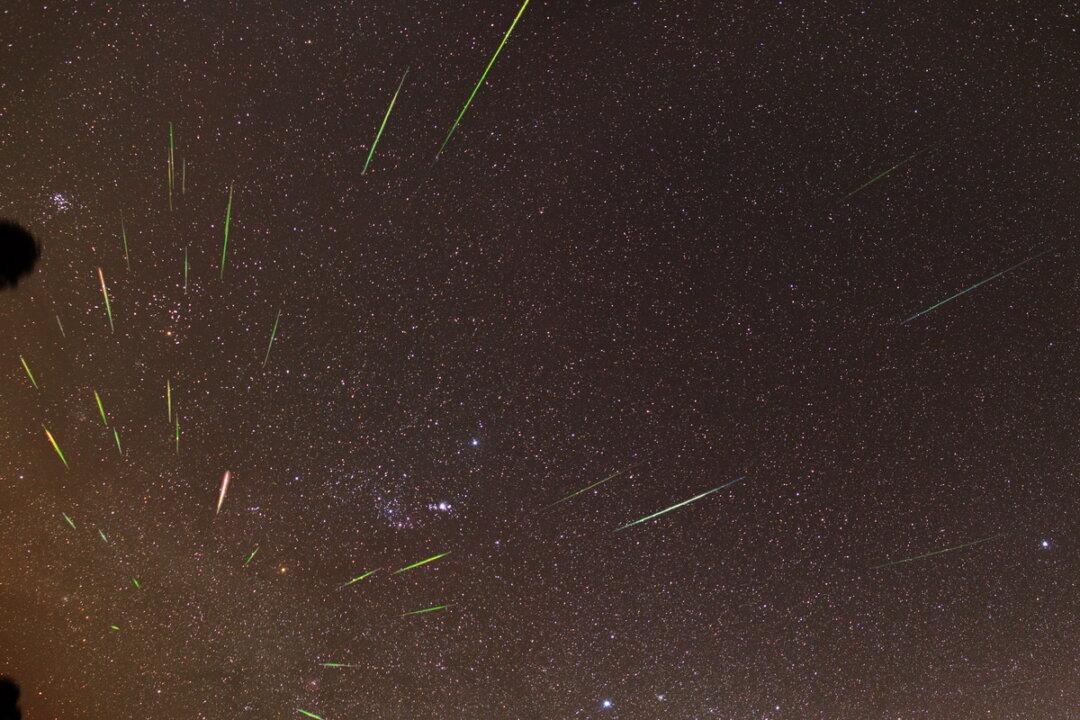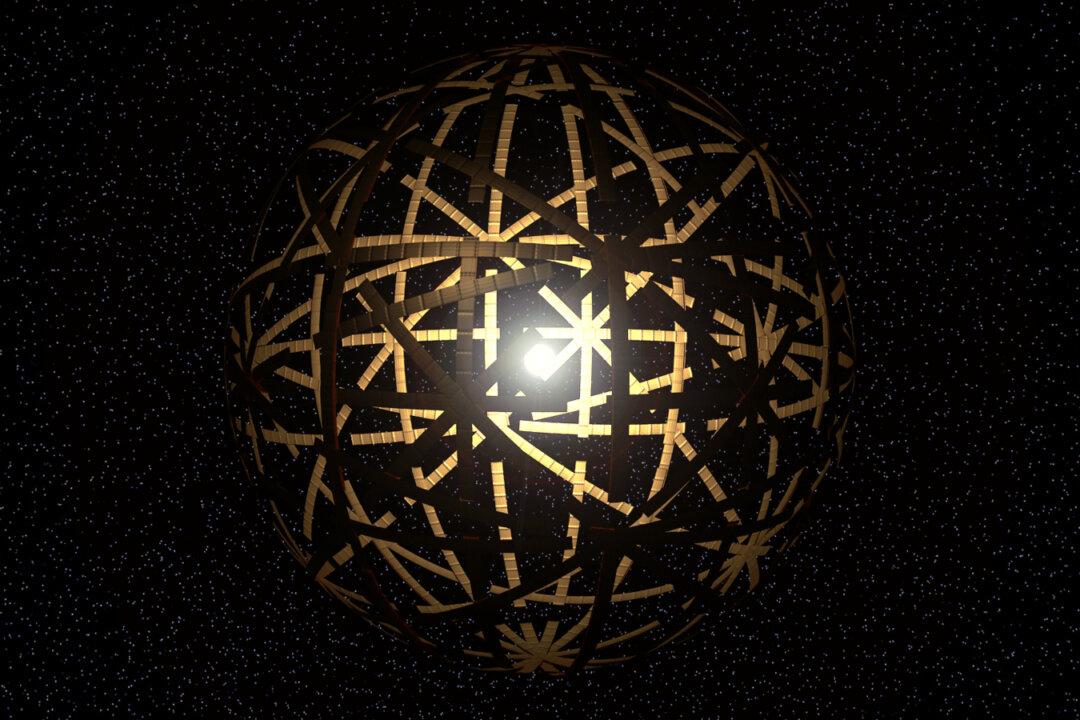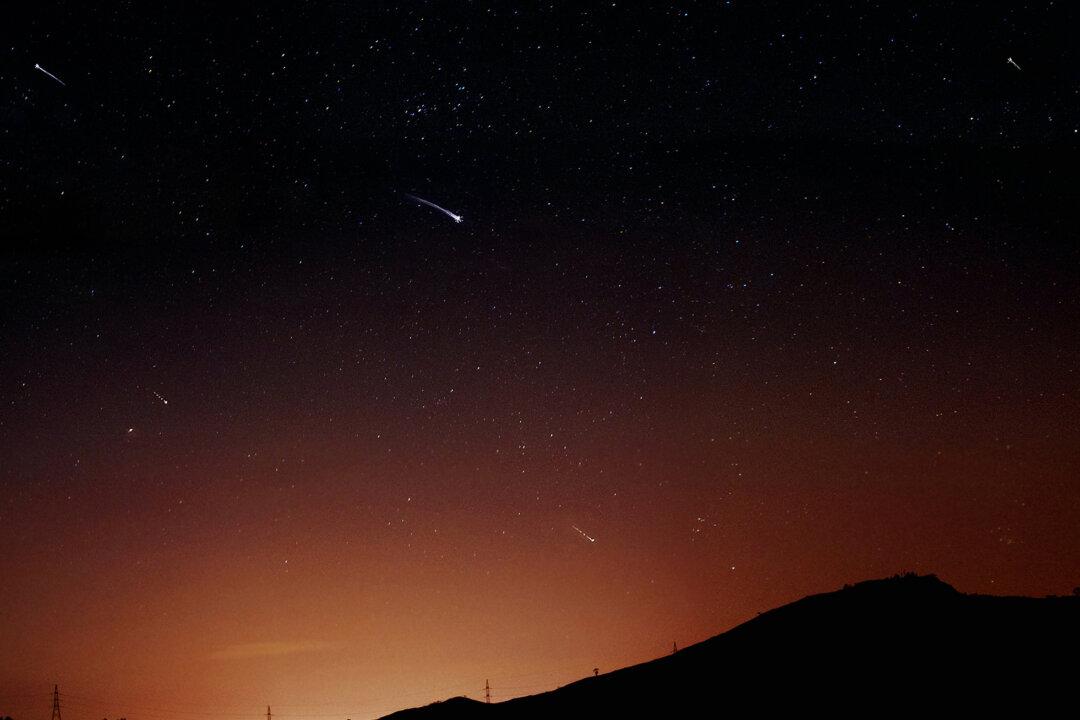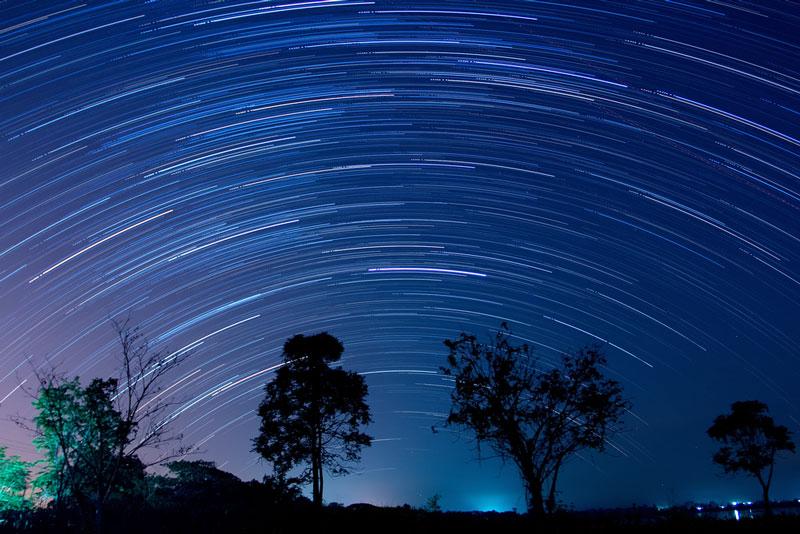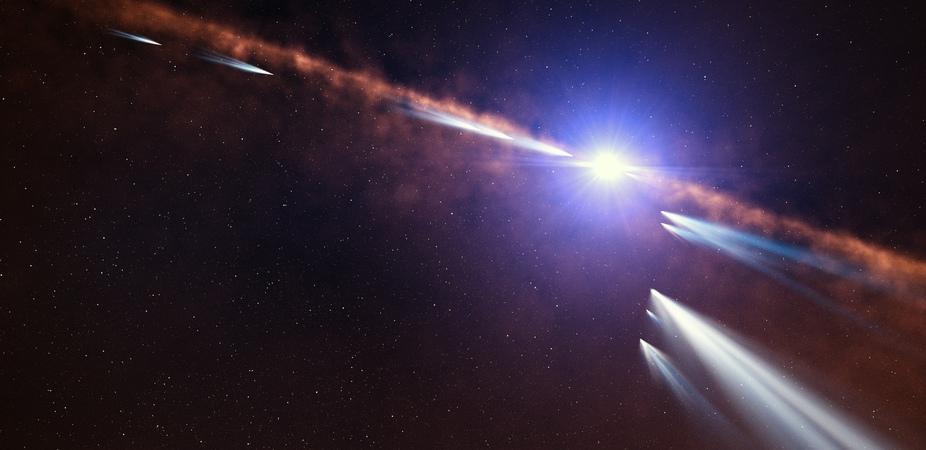As Earth orbits the sun, it continually ploughs through dust and debris left behind by passing comets and asteroids. On any night of the year, a keen-eyed observer might see five, or even ten, meteors (shooting stars) per hour.
But over the next week, that number will rise markedly, as Earth moves through the centre of a stream of debris left behind by the most famous of all comets, comet 1P/Halley.
Most meteor showers have a short, sharp maximum that is best observed over a single night or two. But the Orionid meteors (which have already been active for a couple of weeks) will really kick into action this weekend, and should remain close to their peak for most of next week. Best viewing is likely on or around Tuesday evening, October 21.

Comet Halley. ESA/Max Planck Institute for Solar System Research
